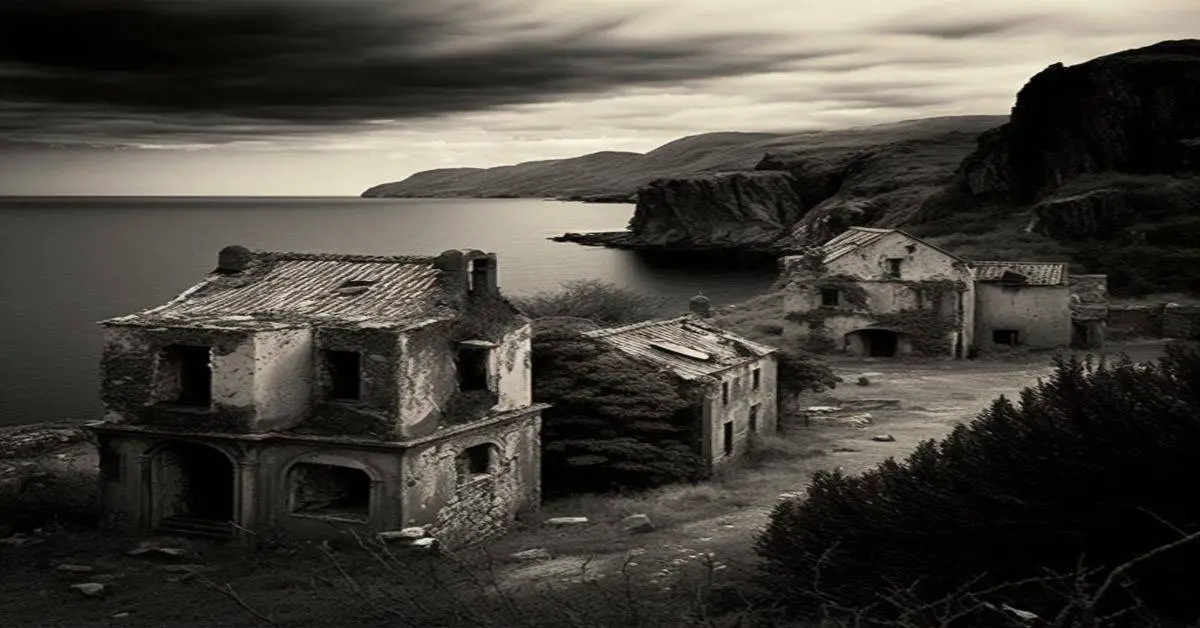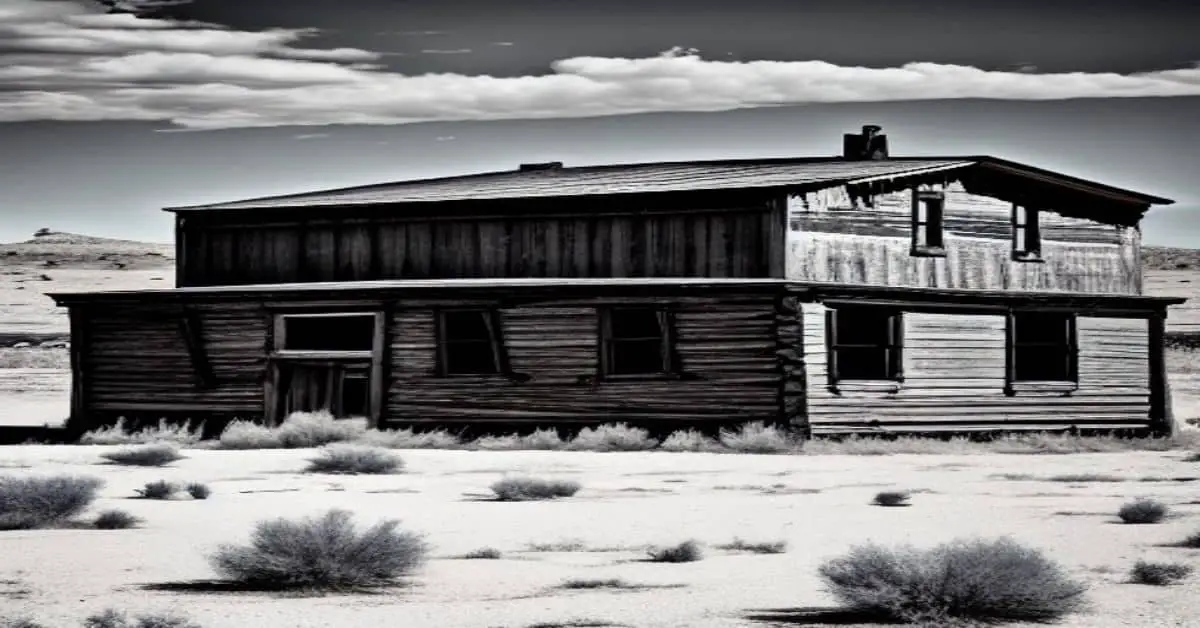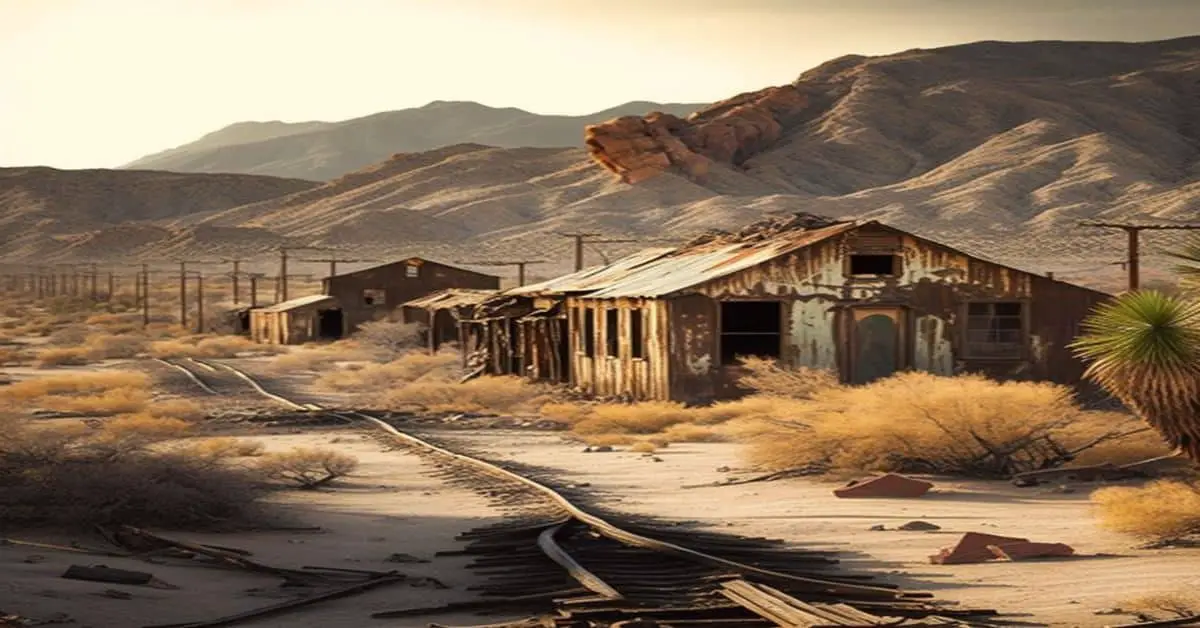Nestled in the rugged terrain of Arizona lies a ghost town that takes visitors back in time to the days of the Wild West. Pipe Spring National Monument, once owned by Mormons as a fort, offers a unique glimpse into the state’s rich and haunting history.
The town served as a sanctuary for Mormon leader Brigham Young and his wives, who sought protection against Indian attacks. Today, visitors can explore the extensive remains of this fascinating town and learn about its unique history from a knowledgeable Indian tour guide.
As visitors step into Pipe Spring National Monument, they are transported back to a time when the West was still wild and untamed. The remains of the town stand as a testament to the struggles and hardships faced by settlers and their families as they tried to establish a new way of life in the unforgiving wilderness.
From the fort that served as a sanctuary for Brigham Young and his wives to the extensive ruins of the town, Pipe Spring National Monument offers a hauntingly beautiful glimpse into Arizona’s past.
Key Takeaways
- Pipe Spring National Monument was originally acquired by the Church of Jesus Christ of Latter-day Saints and served as a fort to protect the Mormon community from Native American attacks.
- The site is significant as a sanctuary for Mormon leader Brigham Young and his wives, an important stop from Utah to California, and culturally significant for the Kaibab Band of Paiute Indians.
- Visitors to the monument can explore extensive remains of the town, historic spring, orchard, and gardens cultivated by the Mormon settlers, and buildings such as the blacksmith’s shop and spring house.
- Knowledgeable Indian guides lead the tour experience and includes interactive elements, detailed explanations of the fort’s defensive features, and local legends and stories for a deeper understanding of the cultural significance of Pipe Spring.
Location and Ownership
Pipe Spring National Monument, located in Arizona, is a ghost town currently owned by the state. The property was originally acquired by the Church of Jesus Christ of Latter-day Saints in the mid-1800s as a site for a fort to protect the Mormon community from Native American attacks. The fort was built around a natural spring, which provided a reliable source of water in the arid desert landscape.
In the late 1800s, the property was sold to the federal government, establishing it as a national monument in 1923. Today, it is managed by the National Park Service.
The historical significance of Pipe Spring National Monument lies in its association with the early settlement of the West, particularly the Mormon pioneers who played a major role in the region’s development. The fort at Pipe Spring was an important stop on the route from Utah to California, and it served as a base for Mormon missionaries and settlers who established communities throughout the West.
The site also has cultural significance for the Kaibab Band of Paiute Indians, who were the original inhabitants of the area. Today, visitors can explore the restored fort and learn about the region’s history through exhibits and guided tours.
History and Remains
The fort at this national monument in Arizona was originally established by Mormons as a means of protecting against Indian attacks and housing the head Mormon and his multiple wives. The fort, built out of local limestone, was completed in 1872 and served as a source of protection for the Mormon settlers who were making their way through the West. The history of the fort is rooted in the conflicts between the Mormon settlers and the local Indian tribes, which were often violent and deadly.
Despite the tensions, the fort provided a safe haven for the settlers and their families, allowing them to establish a foothold in the region. In addition to the fort itself, visitors to Pipe Spring National Monument can explore several other remains from the site’s historical past. These include the historic spring that gave the monument its name, as well as the nearby orchard and gardens that were cultivated by the Mormon settlers.
Visitors can also tour the grounds and learn about the fort’s history and its importance in the settlement of the American West. Overall, the history and remains of Pipe Spring National Monument provide a fascinating glimpse into the challenges faced by Mormon settlers in the region and the role that the fort played in their survival.
Tour Experience
Visitors to the national monument can gain insight into the fort’s past and the challenges Mormon settlers face through a tour led by knowledgeable Indian guides. The tour offers interactive elements, allowing visitors to experience the fort’s history through various activities. For instance, visitors can try grinding corn using a traditional mortar and pestle, which was an essential task for the fort’s inhabitants.
Additionally, the tour guides share local legends and stories, providing a deeper understanding of the cultural significance of Pipe Spring. The tour experience offers a unique opportunity to learn about the fort’s history and its significance to the local community.
Visitors can explore the various buildings that make up the fort, including the blacksmith’s shop and the spring house. Moreover, the tour guides provide detailed explanations of the fort’s defensive features, such as the gun ports and the walls made of sandstone and adobe.
Through an immersive and informative tour experience, visitors can gain a deeper appreciation of the challenges faced by the early settlers and the rich cultural heritage of the region.
Frequently Asked Questions
What kind of paranormal activity has been reported at Pipe Spring National Monument?
Spectral sightings and eerie phenomena have not been reported at Pipe Spring National Monument. The site was originally a Mormon fort to protect against Indian attacks and is now preserved as a historical monument with extensive remains.
Are visitors allowed to enter any of the remaining buildings?
Visitors to Pipe Spring National Monument are allowed access to some of the remaining buildings, which hold historical significance as part of a fort owned by Mormons in the 1800s. Building access varies depending on preservation needs and safety concerns.
Has the National Park Service made any efforts to preserve the ghost town’s history and artifacts?
The National Park Service has made efforts to preserve Pipe Spring National Monument’s history and artifacts. Extensive remains of the fort, originally owned by Mormons to protect against Indians, can still be seen, with an entrance fee of $3.00.
Are there any legends or ghost stories associated with the site?
Coincidentally, local folklore tells of a young girl who died in the fort during its construction. However, historical significance outweighs legends at Pipe Spring National Monument, which served as a Mormon fort and symbolizes the struggle between settlers and Native Americans.
Has the site been used as a filming location for any movies or TV shows?
Pipe Spring National Monument has not been widely used as a filming location for movies or TV shows. However, it was briefly featured in the 1969 film, Mackenna’s Gold, making it a minor location for famous productions.


